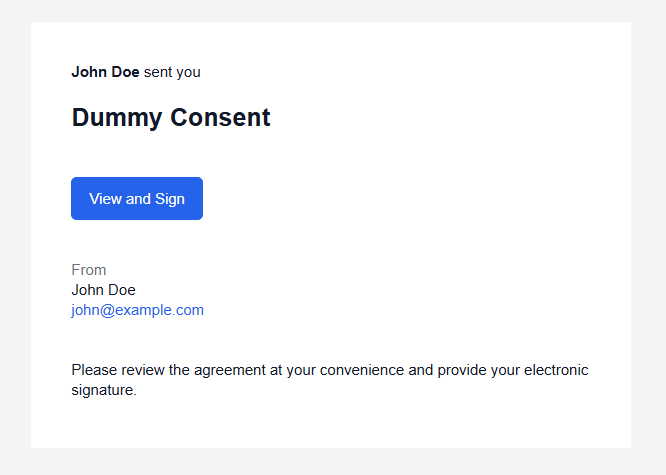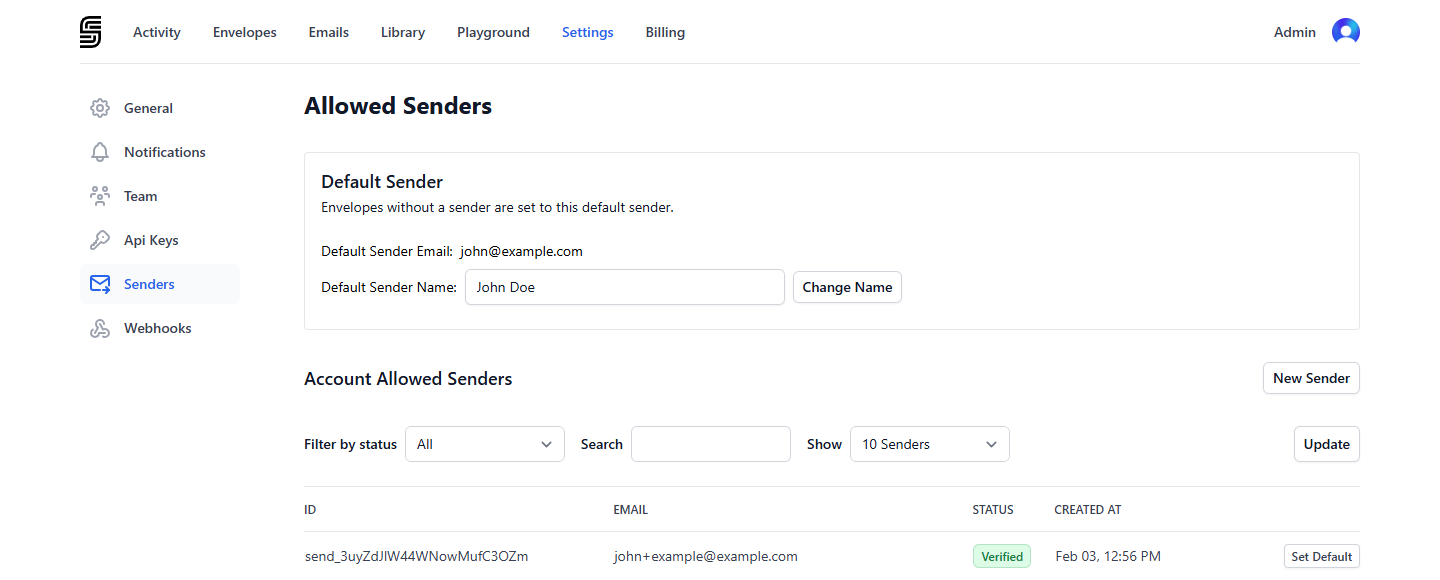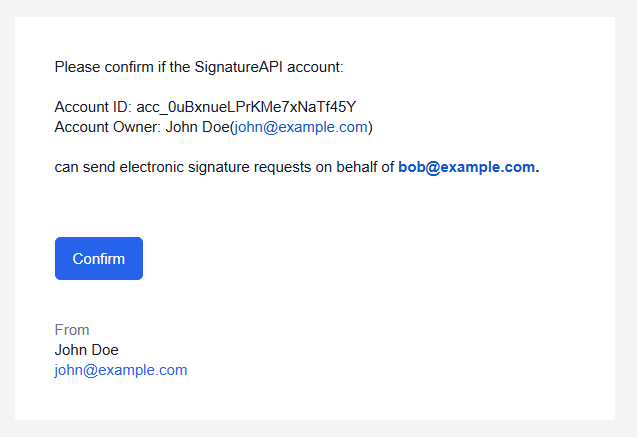john@example.com) or non-personal (e.g., support@example.com). The sender’s email address appears in the body of the email (see below) and is used as the Reply-To address of the message.

Creating Senders
Before SignatureAPI can send requests on behalf of an email address, the address must be verified. You can add and verify senders manually via the Dashboard or programmatically using the API.Creating Senders in the Dashboard
Senders are managed in the Settings → Senders section of the Dashboard.


pending_verification. Once the email owner clicks the link and verifies the address, the status updates to verified. If there’s an issue (e.g., the email bounces), the status changes to failed.
Creating Senders via API
This feature is currently in public preview.
To enable this feature, please contact our support team.

verified, and the sender.verified event is triggered. If there’s an issue (e.g., the email bounces), the status updates to failed, and the sender.failed event is triggered.
Default Sender
When creating an envelope, you can either specify a sender explicitly or use your account’s default sender. To specify the sender explicitly, include thesender property when creating the envelope:

Attributes
The unique identifier of the sender.
The email address of the sender.
The current status of the sender.Available options are
pending_verification, verified, and failed.Time at which the sender was created, in format.